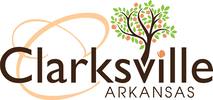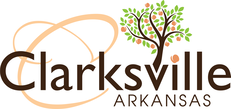Planning & Zoning
|
The Planning Commission meets the fourth Thursday of each month at 6:00 p.m. The meeting is held in the city administration building located at 205 Walnut Street. What does the Comprehensive Plan do? First, the land use plan provides a “blueprint” for the growth of the city. It sets forth the manner in which the city will accommodate development or redevelopment. Its focus is the best interests of all citizens. Second, the plan identifies and analyzes the various growth issues facing the community. Third, the plan will set forth in greater detail how growth will be controlled and managed so as to fit the economic resources of the community. Fourth, the plan forms the foundation for regulations, including the zoning code and subdivision code. This is the most critical area since the adoption of a plan provides the basis upon which a community may exercise zoning and subdivision regulations. Finally, the plan provides a rational basis for making land use decisions. This is extremely important in an age of almost constant litigation. What does the Comprehensive Plan not do? The plan is not a legal document. It is a policy document which sets forth the intention of the planning commission and city council regarding growth and development decisions. The plan is not a zoning code. It’s provisions are general and do not bear on specific properties. Following adoption and filing of the land use plan, the commission may prepare for submission to the legislative body a recommended zoning ordinance for the entire area of the municipality. The zoning ordinance or code does exercise legal authority over each individual property in the city. The comprehensive plan adopted by the planning commission is not a “strategic” plan in most cases. It is, rather, an element of strategic planning for the city. The land use plan is not a cure-all. It cannot solve all the problems of a community. In fact, it can solve very few problems unless it enjoys the full support of the planning commission, city council, and the citizens. What do the Zoning Regulations do? Zoning regulations serve as a legal instrument to implement a land use plan. The zoning code is the actual legal document that regulates land use. Unlike the land use plan which is a policy document. Zoning regulations govern how land within the city can be used. These regulations may extend to what uses are allowable in each part of the city, how tall buildings may be, or how far from the street a building must be constructed. The intent is to provide for the health, safety, and general welfare of the public. This is done by ensuring development occurs in an orderly fashion that protects residents and land owners within the city from the intrusion of incompatible land uses. The regulations consist of map that depicts different "zones." These "zones" on the map relate to regulations in the text that describe what rules apply to the zone. For example, within a residential "zone" you might see rules that dictate only homes are allowed and must be set back a certain distance from the street or the property line. |
Comprehensive Plan Brochure Comprehensive (PROPOSED) Plan Map 2020 - 2040 (PROPOSED) Comprehensive Plan City Zoning Map Downtown Map Existing Land Use Map Flood Plain Map (Updated) Interactive Flood Map Population Density Map Regional Map Topographic Relief Map University District Map ZONING CODE Subdivision Code |
Commissioners
|
Name
|
Position
|
KATIE HOWARD |
CHAIR |
HANNAH HATCHETT |
VICE CHAIR |
SARAH COX |
SECRETARY |
JACOB BOEN |
COMMISSIONER |
BOB SCHWEGLER |
COMMISSIONER |
TIM KAJDAN |
COMMISSIONER |
HARLEY MORK |
COMMISSIONER |



